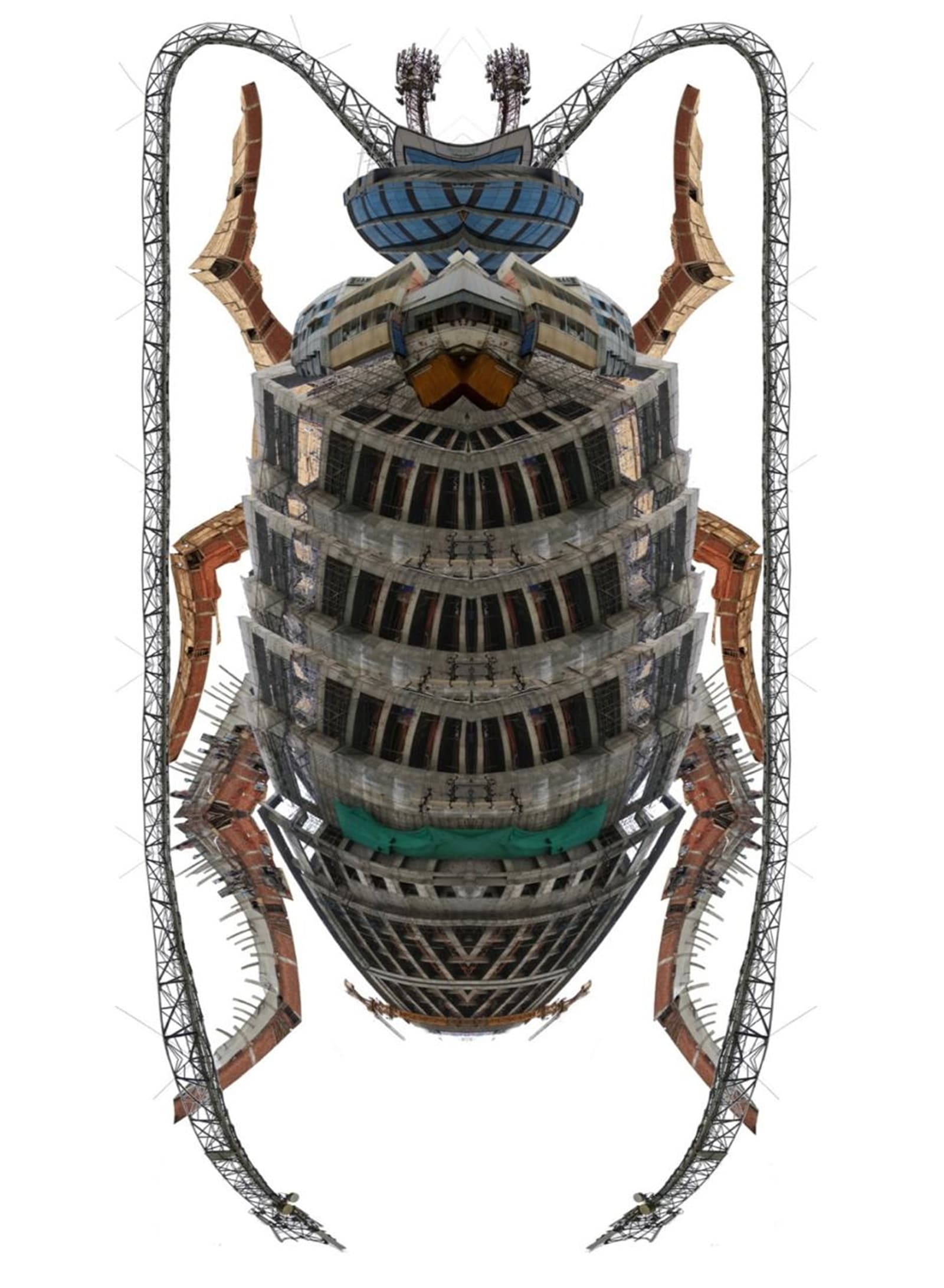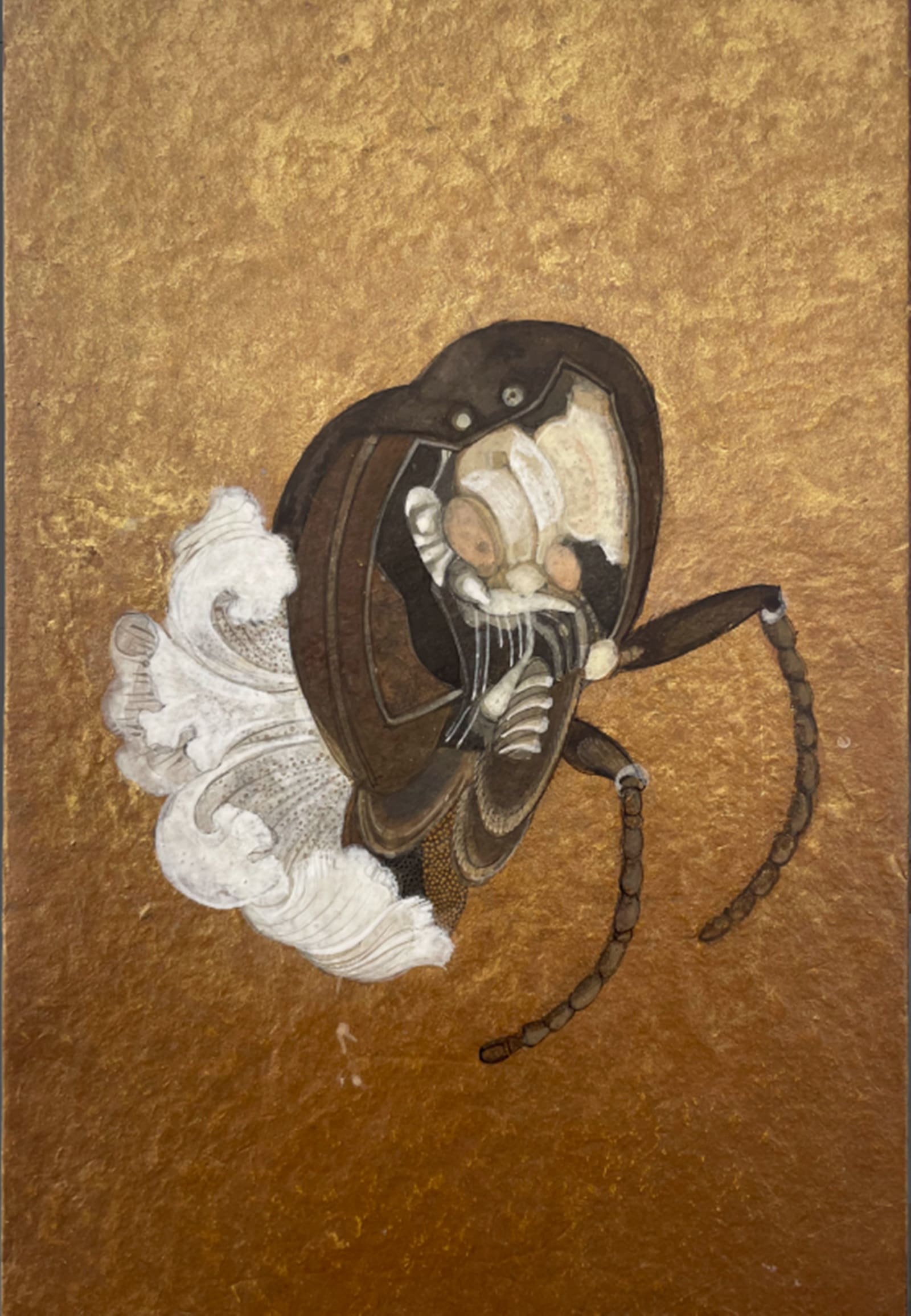The last time anyone was thankful for a bug in their backyard was probably when a radioactive spider bit Peter Parker, giving us the fabled Spiderman. Except that the creepy crawlies have much more than just the heebie-jeebies to offer.
Among the first bioindicators of climate change, insects are able to detect changes in the environment, allowing rapid response to protect the planet: mayflies and stoneflies are a sign of clean water and migration of butterflies are sensitive to temperature fluctuations.
As if in an act vindicating their role in nature, several contemporary Indian artists have made these bugs into their muses to foster discourse on one of the most pressing issues of the 21st century: the environment.
In a rather literal ode, artists Nibha Sikander and Namita Vishwakarma recreate images of different insects they spot in their environment, creating a sort of an archive.
Sikander, who lives in Murud-Janjira on the outskirts of Mumbai and next to the Phansad sanctuary, makes life-like paper relief sculptures of moths. The recreations are anatomically accurate enough to trigger entomophobia (fear of insects). Most of her works are presented in a set of the whole insect and its dissected body comprising wings, abdomen, head and antennae.
Having lived in the area since 2017, the 41-year-old artist has observed a noticeable dip in the population of once-frequent species of moths. “I always felt that people always focused on butterflies and not moths because they are nocturnal, and are likely associated with things that are dull. But the more I documented them, the more I realised the crazy colours and patterns they come in,” says the artist whose go-to glossary for identifying the species is Dr V Shubhalaxmi’s Field Guide to Indian Moths.
 A work from All things we know, we connect by Sachin George Sebastian, 2024 (Hand-cut acid free paper collage) Courtesy: the artist
A work from All things we know, we connect by Sachin George Sebastian, 2024 (Hand-cut acid free paper collage) Courtesy: the artist
“I understand that some things — development due to tourism — are inevitable. And I don’t see certain species of moths as frequently as I did about eight years ago. So when I am documenting the moths through my work, I feel like I am forming an archive because I don’t know if they are going to exist in the area in the future. I want to impact the way someone looks at nature, even if it is in a small way,” says Sikander.
Story continues below this ad
Namita Vishwakarma from Bastar, too, has a practice to a similar end. However, unlike Sikander’s scientific recreations, she paints the insect in its natural habitat. This entry point into her work brings the dialogue between an organism and its environment under the spotlight. “When we look at the ground, it appears to be of the same colour throughout, but if you observe closely, you will notice that it is made of different particles of different colours. And as I looked at the ground, I started seeing the different bugs that we usually don’t notice. But it is important to understand that their existence is as integral to the planet as human life. That is something that I wanted to draw people’s attention to,” she says, talking about the seemingly lenticular backgrounds of her portraits of a caterpillar, a mantis, a butterfly and a velvet mite.
Vishwakarma, 29, comes from the celebrated lineage of Gond artist Shanti Bai, although she doesn’t identify as one. Like her grandmother, she, too, uses the traditional style of tattoo making in the region. Her subjects are from her immediate surroundings, the conversation on environment she wishes to initiate through her work, is as contemporary as it gets.
Sachin George Sebastian, 40, uses the motif of insects in a rather layered way to fit his nearly two decade-long practice that reflects upon the ecological ramifications of urbanisation. Like Sikander, he too creates realistic paper relief sculptures inspired by taxidermy practices in his series ‘All things we know, we connect’. The dissection, however, reveals more than just insect anatomy. The different parts of the bug are superimposed with images of ongoing construction in cities. In the image of a longhorn beetle, the head, thorax and the abdomen become an under-construction building with the all too familiar green net hanging over it, and the antennae are replaced by the cellphone towers that behind being an eyesore, are known to have adverse environmental impact, including soil erosion and habitat disruption, primarily of birds.
 A work from The Bloom of Broken Wings by Anindita Bhattacharya, 2024 (Natural pigments and gold on Wasli) Courtesy: the artist
A work from The Bloom of Broken Wings by Anindita Bhattacharya, 2024 (Natural pigments and gold on Wasli) Courtesy: the artist
“The idea that something so negligible in our daily life is such an important part of our ecosystem and survival made me look into the insect world. I was also fascinated by how we preserve their bodies, many of the species are probably extinct, thanks to the so called development by us humans,” says Bengaluru-based Sebastian, adding, “I found it interesting that each area has its own kind of insects and found it very similar to how each area has its own type of architecture happening. With all these similarities I ended up with this series of work.”
Story continues below this ad
Mumbai-based Tanujaa Rane too has been familiar with the discomfort that accompanies the sight of bugs. It was an exercise in observation and cognisant self-learning that drew her to the fascinating life cycle of insects, eventually making it one of the primary subjects of her practice.
“I have always drawn creatures from the environment unknowingly… dogs, cats etc. But as I spent more time studying about them, I became cognisant of their existence, especially the smaller creatures such as moths and butterflies, beetles. I realised how they often go unnoticed, yet without them, the ecosystem would not be able to function the way we know it to. I remember how icky we would feel about worms, but recently as a session I learned how critical they are for maintaining a healthy soil ecosystem or how they are an important source of protein,” says Rane.
It is this transition — from disgust to appreciation — that the 49-year-old printmaker addresses in her ‘Metamorphosis’ series. The works consist of large-scale images of different insects — dragonfly, moth, beetle — put together as tiles of a puzzle, hinting at the constant process of evolution. “This enlightenment about the self and the environment, in a way, mirrors the emergence of an insect from its cocoon,” she says.
If Rane talks about better understanding of the environment on part of humankind, Anindita Bhattacharya wonders about nature in a post-human world. In The Bloom of Broken Wings, which was part of her solo at the India Art Fair 2025, she creates a pantheon of fictional gods and goddesses created by mutating known species of insects.
Story continues below this ad
“These insects are hybrids that are born in a time after nature has been destroyed by us. I wanted to show that without human intervention nature is capable of rejuvenating and creating life, even in the face of destruction,” says the artist whose work looks at the human as the parasite that plagues the environment.




